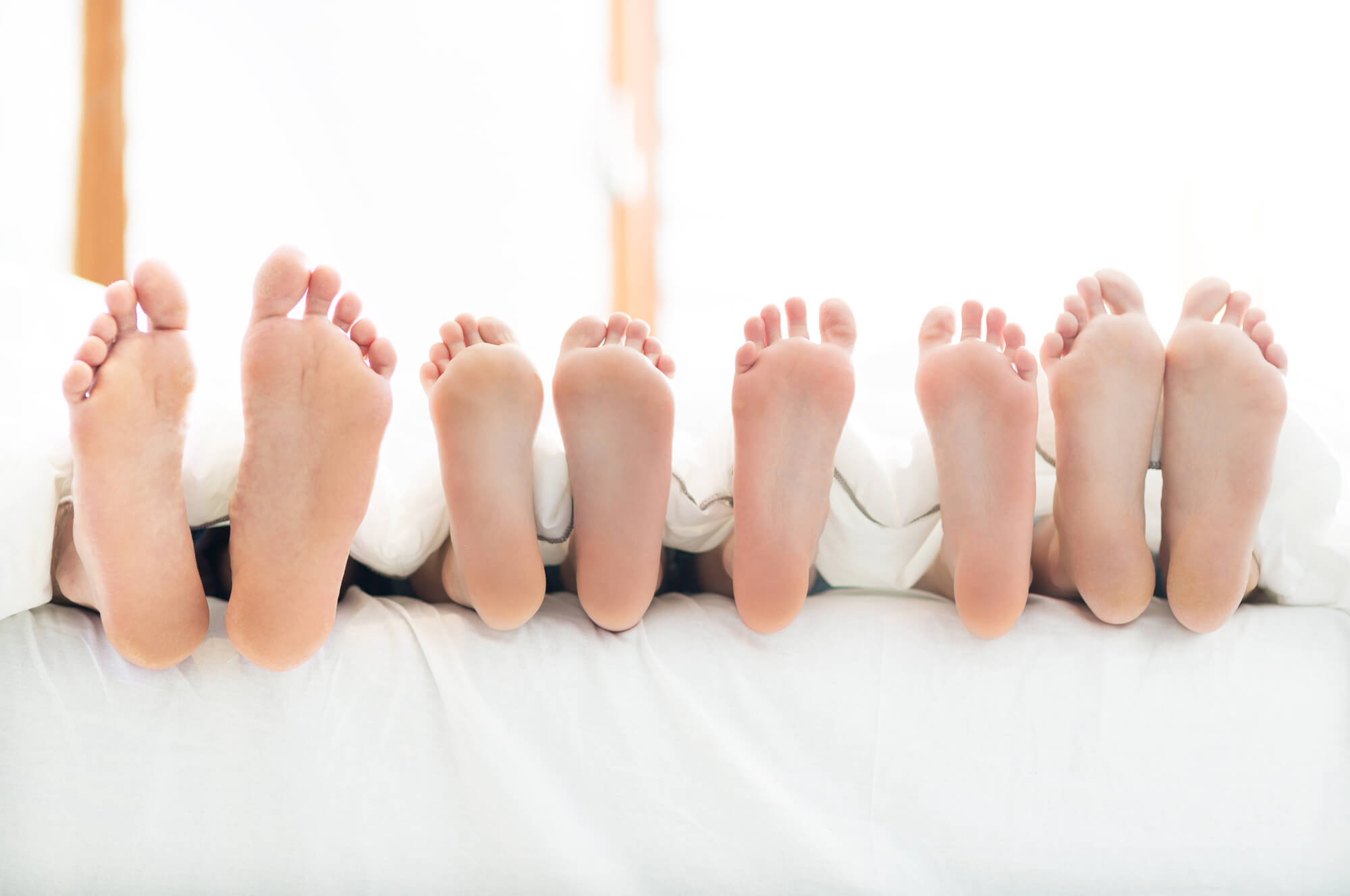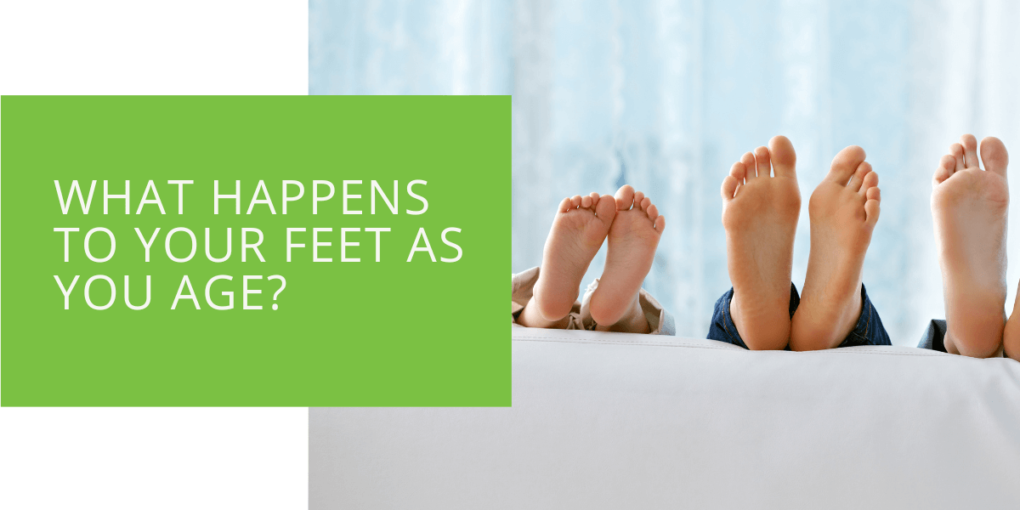What Happens to Your Feet as You Age?
Our bodies undergo various changes as we age, and our feet are no exception. Understanding how aging affects the foot and ankle is crucial for maintaining overall health and mobility. This comprehensive guide will explore the intricate relationship between aging and foot health, common foot problems older adults face, and practical tips for foot care.
Key Takeaways
- Regular foot care is crucial for older adults to prevent and manage common foot problems associated with aging, such as arthritis, bunions, and toenail issues.
- Choosing the right footwear, avoiding high heels, and utilizing orthotic devices can help alleviate foot pain and support aging feet.
- Seeking professional podiatric care for foot pain and discomfort is essential for maintaining mobility and overall quality of life in older adults.
Understanding the Foot's Structure
The foot is a marvel of biomechanical engineering, consisting of 26 bones, 33 joints, and over 100 muscles, tendons, and ligaments. These components work synergistically to support the body's weight, absorb shock during movement, and provide stability and balance.
Each part of the foot serves a specific function. For example, the arches of the foot act as shock absorbers, helping to distribute the body's weight evenly and reduce impact forces. Meanwhile, the toes play a crucial role in propulsion during walking, aiding forward motion.
Common Foot Problems in Older Adults
Foot Pain
Foot pain is pervasive among older adults, often stemming from underlying conditions such as arthritis, tendonitis, and nerve damage. Osteoarthritis, the most common form of arthritis, leads to the degeneration of joint cartilage, resulting in pain, stiffness, and swelling in the affected areas.
Arthritis-related foot pain can be particularly debilitating, affecting mobility and hindering daily activities. Individuals may experience discomfort not only in the joints but also in the surrounding soft tissues, such as ligaments and tendons.
Foot Problems
Older adults are prone to various foot problems, including bunions, corns, and calluses. Bunions, characterized by a bony bump at the base of the big toe, often develop due to improper footwear or structural abnormalities in the foot. Corns and calluses, conversely, are thickened skin areas caused by friction or pressure, typically occurring on the toes or soles of the feet.
While these foot issues may seem minor, they can cause significant discomfort and impact mobility, especially for older adults with reduced skin elasticity and circulation. Addressing these problems early can prevent them from worsening and causing further complications.
Toenail Issues
Toenail problems, such as fungal infections and ingrown toenails, are common concerns in older adults. Fungal infections, known as onychomycosis, can cause the nails to become thick, discolored, and brittle, leading to discomfort and cosmetic concerns. Ingrown toenails occur when the edge of the nail grows into the surrounding skin, resulting in pain, swelling, and infection if left untreated.
Toenail issues can be particularly troublesome for older adults with diabetes or circulatory problems, as they are at higher risk of developing complications such as infections or ulcers. Proper nail care and regular inspections are essential for early detection and management of toenail issues.

Impact of Arthritis on Foot Health
Arthritis, a group of inflammatory joint conditions, can significantly affect foot health in older adults. Osteoarthritis, the most common form of arthritis, results from the gradual wear and tear of joint cartilage, leading to pain, stiffness, and decreased range of motion in the affected joints.
In addition to osteoarthritis, rheumatoid arthritis, an autoimmune disorder, can also affect the feet and ankles, causing inflammation, swelling, and deformities such as bunions and hammertoes. Managing arthritis-related foot pain often requires a multidisciplinary approach, including medication, physical therapy, and orthotic devices.
Changes in Foot Structure and Function
Changes in Foot Size
As we age, foot size and shape changes are expected due to weakening ligaments, decreased muscle tone, and changes in arch height. These alterations can lead to a wider and longer foot profile, necessitating adjustments in footwear to ensure proper fit and comfort.
Wearing ill-fitting shoes can exacerbate foot problems and contribute to pain and discomfort, particularly in older adults with existing foot conditions. Regularly measuring foot size and choosing shoes with adequate width and depth can help accommodate changes in foot structure and prevent issues such as corns, calluses, and bunions.
Loss of Fat Pad
The natural cushioning in the foot fat pad diminishes with age, resulting in reduced shock absorption and increased pressure on the bones and joints. This can lead to discomfort, especially when walking or standing for extended periods, and may contribute to the development of foot pain and foot deformities.
Older adults may benefit from wearing shoes with ample padding and cushioning insoles to alleviate pressure on the feet and provide cushioning. Additionally, orthotic or custom-made shoe inserts can help redistribute pressure and support the arches, reducing the risk of foot pain and fatigue.
The Role of Footwear
High Heels and Foot Health
High heels alter the foot biomechanics, shifting the body's weight forward and placing excessive pressure on the forefoot and toes. Prolonged wearing of high heels can lead to foot deformities such as bunions and hammertoes and exacerbate existing foot problems such as arthritis and plantar fasciitis.
While high heels may be fashionable, they are not conducive to foot health, especially for older adults with foot conditions or reduced mobility. Opting for supportive footwear with a low heel and ample cushioning can help alleviate pressure on the feet and promote proper alignment and balance.
Choosing the Right Shoes
Selecting the right shoes is essential for maintaining foot health and preventing foot problems in older adults. Consider cushioning, arch support, and toe box width when shopping for shoes to ensure a comfortable and supportive fit. Orthotic devices, such as shoe inserts or custom-made orthotics, can provide additional support and stability for individuals with foot deformities or biomechanical issues.
Properly fitting shoes with adequate support and cushioning can help reduce foot pain and discomfort, improve stability and balance, and prevent falls and injuries. Regularly inspecting shoes for signs of wear and tear and replacing them as needed is crucial for ensuring optimal foot health and mobility.

Importance of Foot Care for Older Adults
Preventive Measures
Regular foot care is essential for older adults to prevent and manage common foot problems associated with aging, such as arthritis, bunions, and toenail issues. Establishing a daily foot care routine that includes washing and drying the feet, inspecting for cuts or sores, moisturizing dry skin, and trimming toenails properly can help maintain foot health and prevent complications.
In addition to daily foot care, older adults should schedule regular foot exams with a podiatrist to monitor for any changes or abnormalities and address any foot concerns promptly. Early detection and intervention can help prevent minor foot problems from worsening and requiring more extensive treatment.
Managing Foot Pain
Various treatment options for older adults experiencing foot pain are available to alleviate discomfort and improve mobility. Over-the-counter pain relievers, such as nonsteroidal anti-inflammatory drugs (NSAIDs), can help reduce inflammation and alleviate mild to moderate foot pain. Physical therapy exercises, stretching, and strengthening techniques can improve flexibility and muscle strength, reducing strain on the feet and ankles.
In severe or chronic foot pain cases, podiatric interventions such as orthotic devices, corticosteroid injections, or surgical procedures may be necessary to address underlying structural issues or correct deformities. Consulting with a podiatrist can help determine the most appropriate treatment plan based on individual needs and goals.
Conclusion
As we age, our feet undergo changes that affect mobility, comfort, and overall quality of life. By understanding the impact of aging on foot health and implementing preventive measures and proper foot care practices, older adults can minimize discomfort and maintain an active lifestyle. At ePodiatrists, we specialize in providing comprehensive foot and ankle care for older adults, addressing many foot problems and conditions. Schedule an appointment with our experienced podiatrists today to ensure your feet receive the attention and care they deserve.

